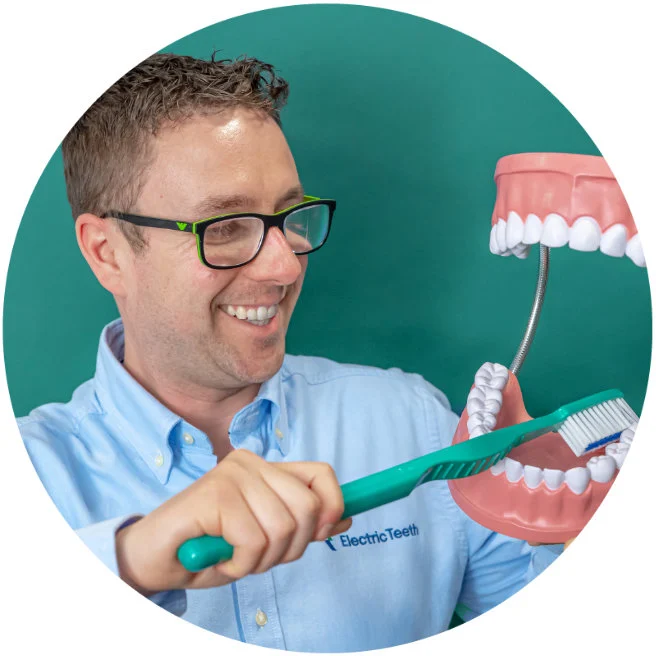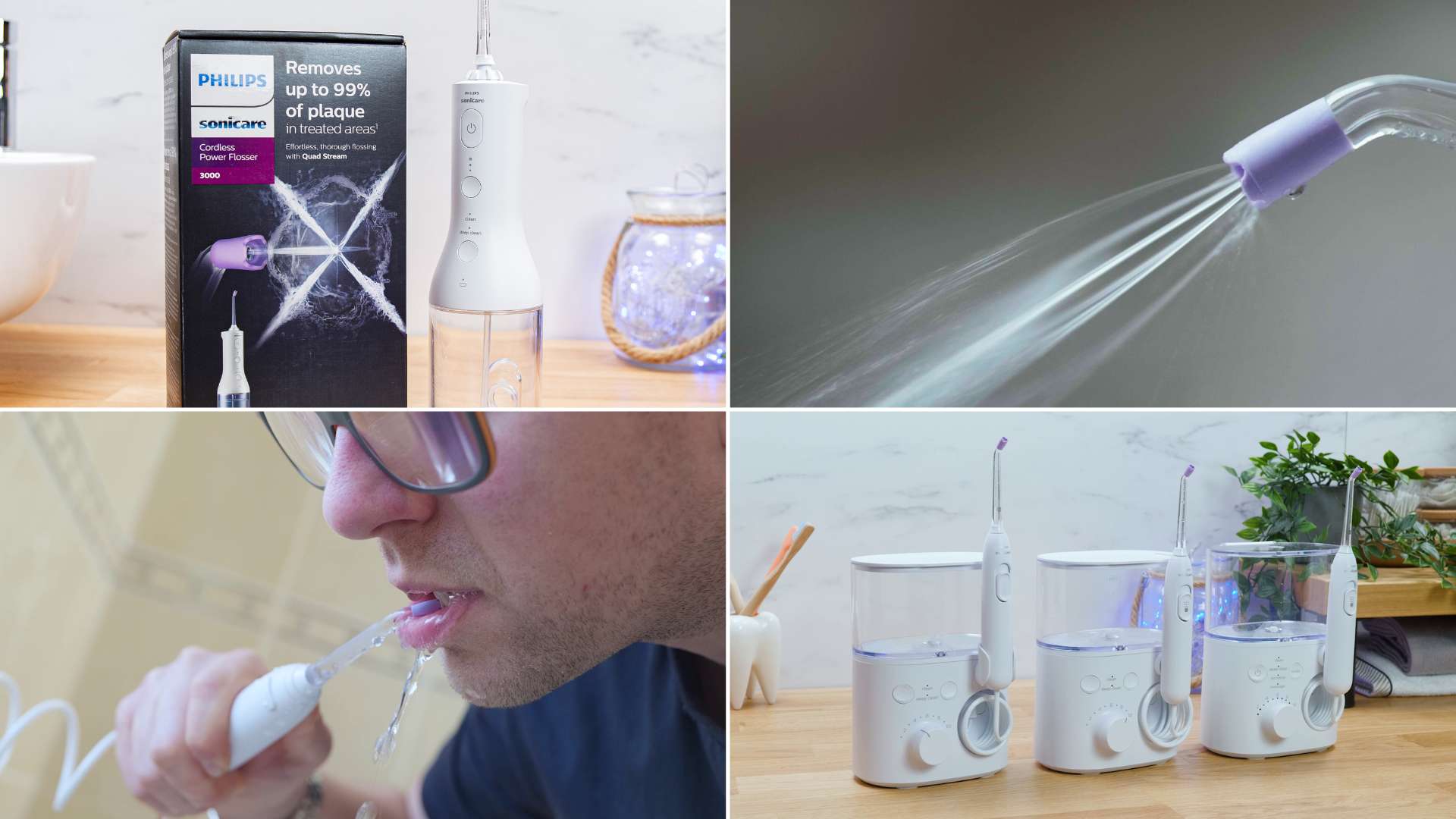
A water flosser that competes with the best
The cleaning results are good, the water tanks are appropriately sized and the overall usability is great. The lack of a rotating nozzle and the cost are disappointing.
The Power Flosser competes with the best, which is impressive considering it’s Sonicare’s first attempt at a water flosser.
I’ve created just one review that covers the Philips Power Flosser 3000, 5000, 7000 and 7000 toothbrush system. The subtle differences between each are explained here. It's the 3000 that is my top pick. There’s little need for the extra features the other models offer.

Pros |
Cons |
|---|---|

Choose between 10 different pressure settings |
Nozzles can’t be rotated |

Built-in pacer encourages even flossing |
Pricier replacement nozzles |

Stylish design & quiet in use |
What I like about the Power Flosser
Having used lots of oral irrigators, the Power Flosser is very good. It looks better and the material choices feel more premium than more affordable alternatives. It competes extremely well with the market leader, Waterpik.
- I found it easy to control the pressure using the rotating dial. After some experimenting I found level 6 or 7 (of 10) to be ideal.
- Pulse Wave helped me time my movements from tooth to tooth, which created a more consistent flow to the flossing
- I only needed to refill the tank every couple of days due to the amount of water it holds
- It’s noticeably quieter (20 decibels) than comparable water flossers
- I like how it looks — a clean design that should look good in most bathrooms
- It’s reassuring that the ADA has independently tested the Power Flosser confirming it works as advertised.
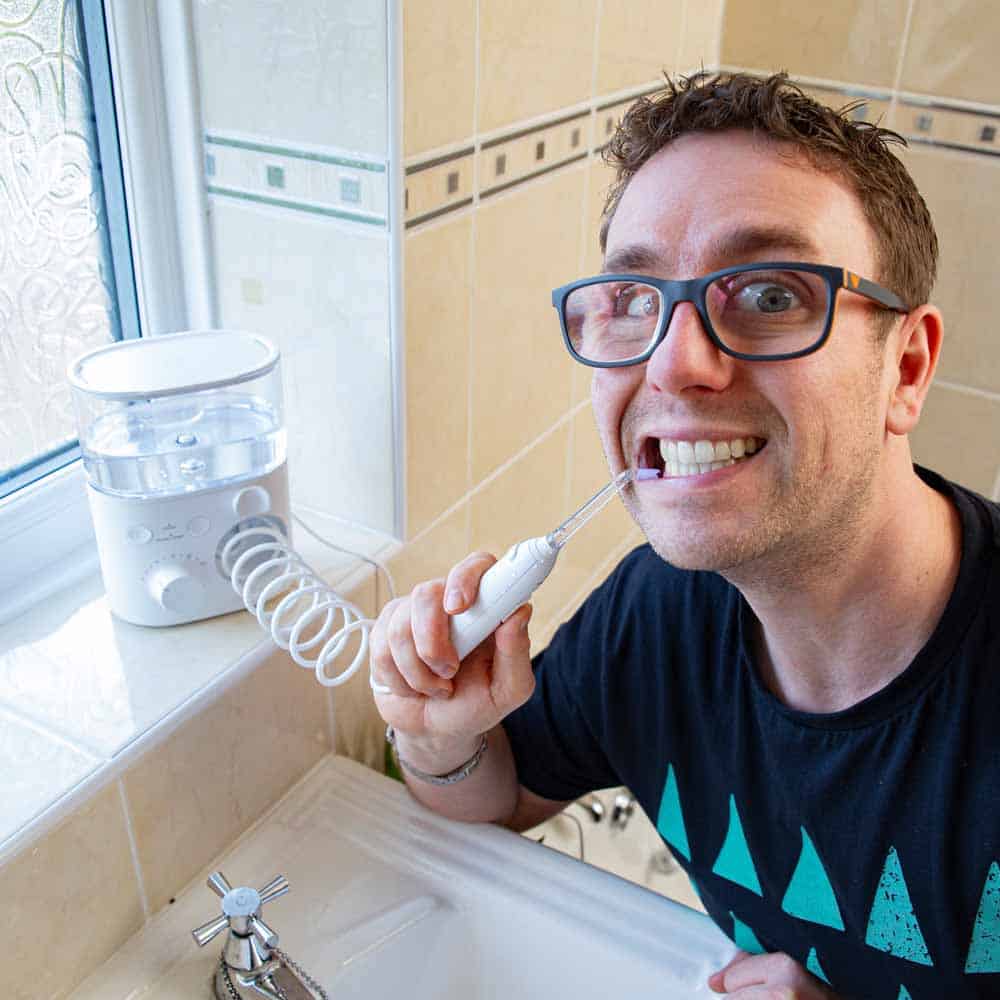
A few niggles, but they’re not deal-breakers
I’m probably being a bit picky, but they do affect daily use. They’re certainly not big enough issues to avoid the Power Flosser entirely.
- The nozzle can't be rotated so I had to twist my arm and wrist more to clean certain areas
- It costs more to own as each replacement nozzle is about 50% ($3) more expensive than Waterpik equivalents
- It gets just as loud as other water flossers at higher pressure settings
- I didn’t notice any cleaning benefit from the additional modes
- It slipped on the countertop when I pressed the buttons, despite having rubber feet
- Docking the magnetic handle isn’t as easy as I had hoped for
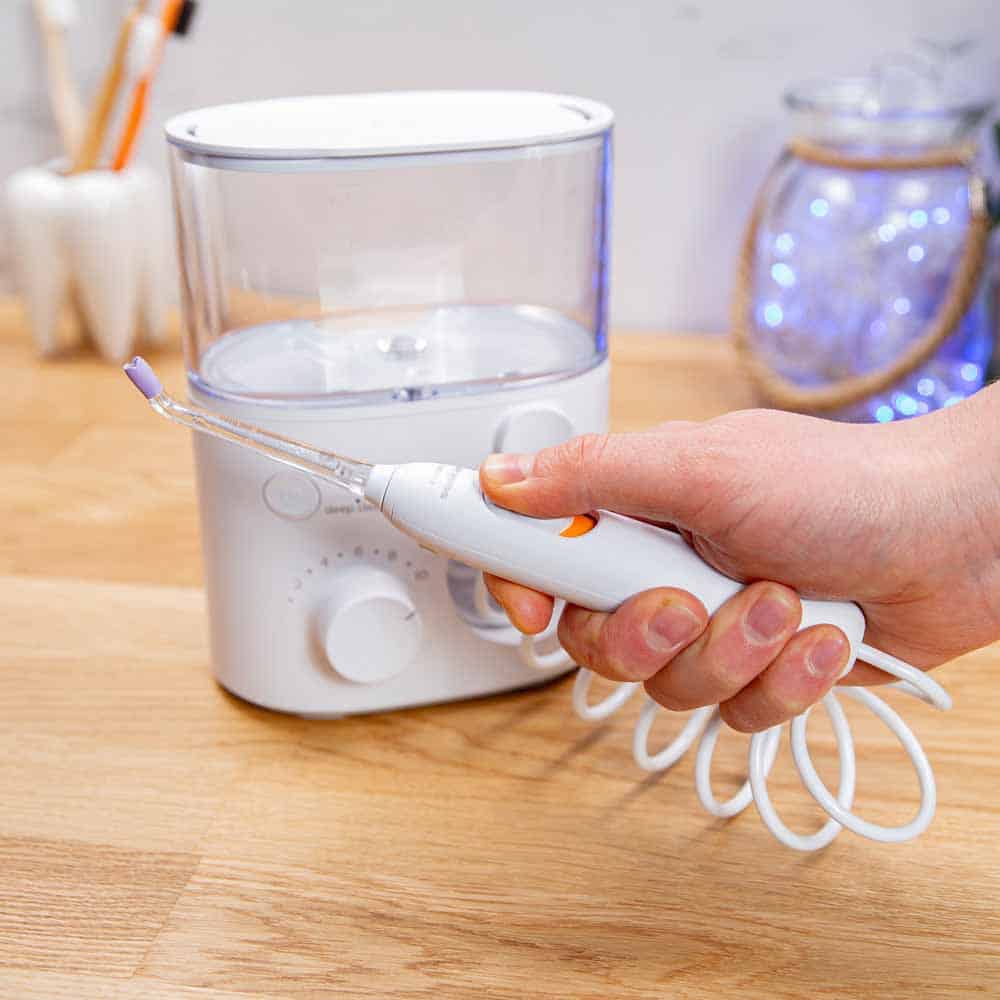
The Waterpik Aquarius is a little more user-friendly
Although a little louder in use, I found the Waterpik Aquarius gave more finite control of the nozzle position. It can be rotated a full 360 degrees. I was able to do it with the index finger of the hand holding the flosser handle. It’s a small thing, but it made reaching tighter spots much easier.
Your ongoing ownership costs are a bit lower too because replacement nozzles are a few dollars cheaper. Going by my calculations, over 3 years the Aquarius is at least $25 cheaper.

Full review: One of the best countertop water flossers
It might not be our number one choice for a water flosser, as it lacks the rotating nozzle dentists like to see present, but it comes incredibly close. It excels in the areas that matter most.
The cleaning results are great & clinically proven
I can’t find a reason to complain about the results. I could feel the difference in my teeth after use and I was amazed at how much debris was left in the sink.
I can’t say it is better or worse than the competition. As yet no clinical studies have been completed to compare them. It’s certainly less hassle than using string floss.
The X shaped water stream that is generated from the F3 quad stream nozzle is very different from the normal jet tip.
I could feel it covering more tooth and gum surfaces. It was a little less intense, but at times more so subject to where the water hit my gums. Yet, for me, the post-use clean feels comparable with the F1 and F2 interchangeable nozzles.
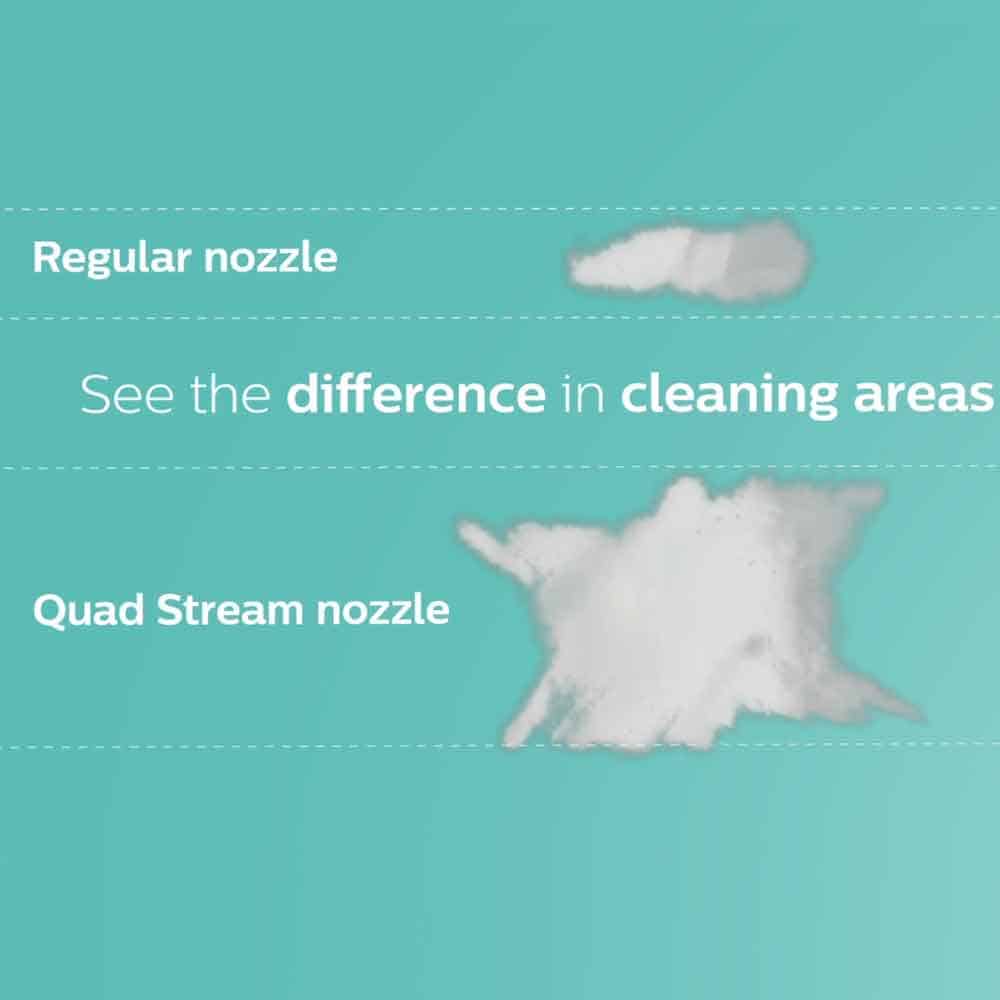
Sonicare’s own data suggests those with pre-existing moderate to severe gingivitis will benefit most from the F3 tip, compared to a manual toothbrush and string floss.
Whilst I’d be inclined to stick with the F1 classic jet tip, the choice of 3, compared to the 6+ of other brands helps reduce decision fatigue. But none of the Sonicare nozzles have bristles. Although not essential they can be useful for cleaning around implants and braces.
ADA approved, I know it’s hard to pass specific rigorous tests. I have extra confidence in using the Power Flosser.
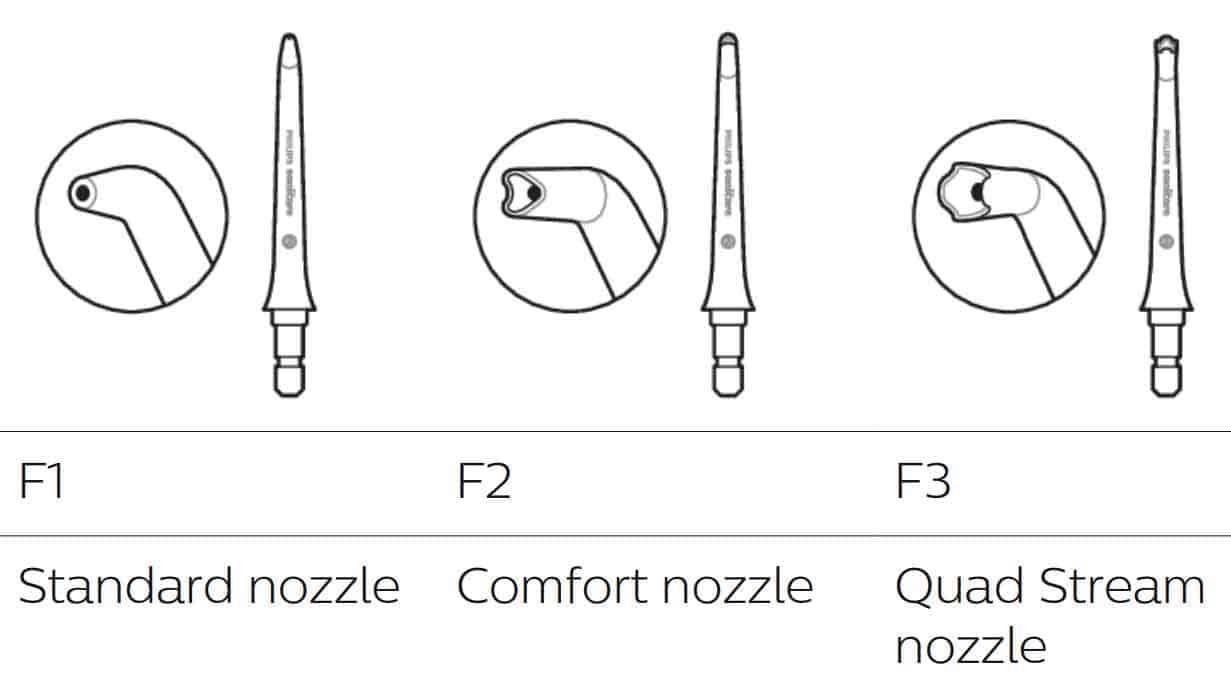
It’s easy to switch between pressure settings
I can’t ever see myself using all 10 pressure settings, but having the choice is nice.
More power doesn’t necessarily mean better results, technique has a bigger impact. Even as an experienced user, I stick to level 6 or 7 normally.
If you’ve got tender gums or are new to water flossing, I recommend using a lower setting of 2 or 3, to begin with, but you can play about to find the right one for you.
Sonicare does not specifically disclose what the difference between each pressure setting is. To me, the lowest and highest pressure settings felt fairly comparable to most other countertop units.
It would be better if the smooth touch dial was textured. But, even if your hands are wet it doesn’t pose a big issue.
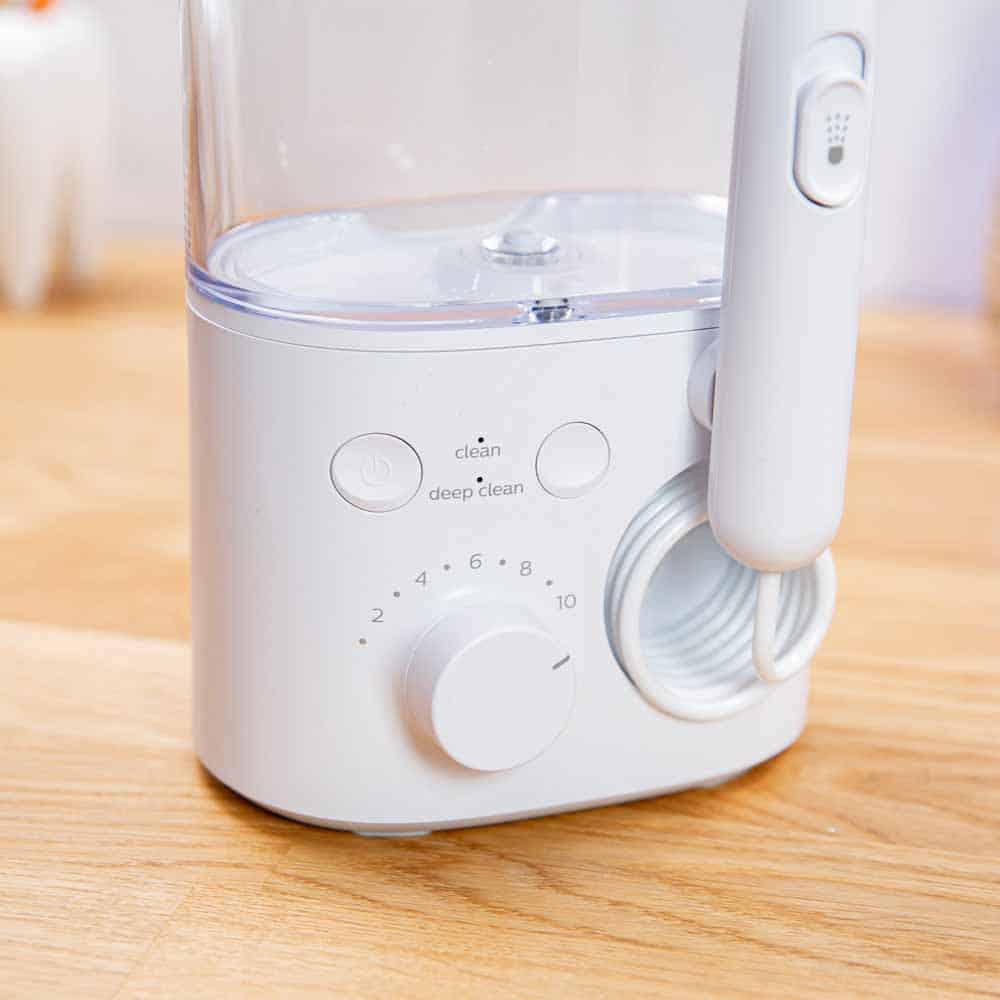
I only needed to refill the tank every couple of days
The 18.60z/550ml tank on the 3000 gives anywhere from 1 minute and 15 seconds to 5 minutes of usage time, subject to mode and pressure setting. I’ve been getting 2 days of use per fill.
Refilling is easy, just remove the reservoir and its lid, refill and pop it back. The hinged lid of the 7000 is more convenient than the fully removable one on the 3000.
You’ve got a couple of extra ounces of capacity in the 7000’s tank, which equates to about 15 seconds of extra usage time.
Unlike the smaller tanks on a cordless model, you are less restricted and can take more time to do a more thorough clean. The compromise is the lack of portability of the countertop unit.
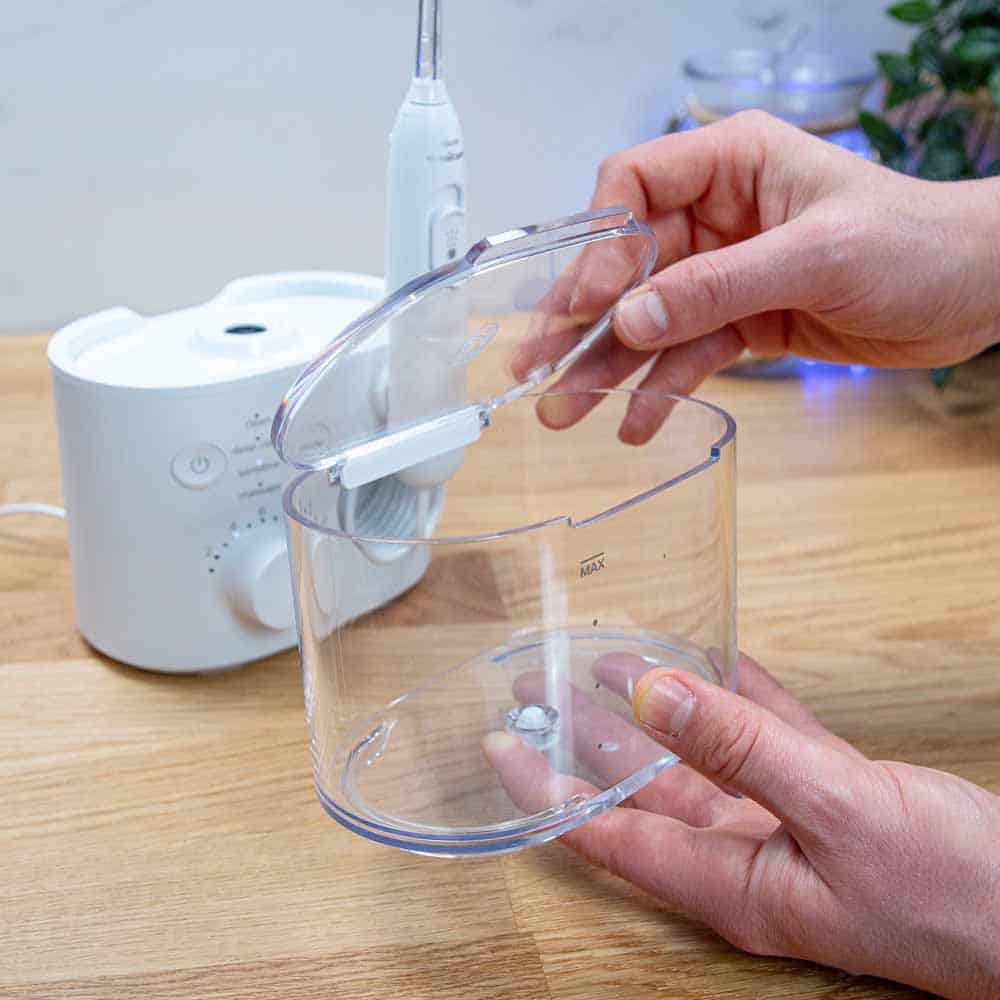
It’s quieter than most water flossers
If you particularly want a quiet flosser, this is a good option. It’s easily 20 decibels (dB) quieter than most (52-54 dB) when set to level 1.
This does increase to approximately 71-73dB when the pressure is increased to 10, which is comparable to models like the Waterpik Aquarius.
The Pulse Wave feature is more helpful than the standard pacer
I’m as guilty as anyone for paying attention to my front teeth more than the ones at the back, so having a 30 second pacer helps me to stick to an even pattern of flossing.
The implementation on the Power Flosser works as well as any others I’ve tested, but I found the ‘Pulse Wave’ feature on the deep clean mode was easier to follow. The rhythm of the pulse gives you a clear cue to move from one tooth to another, which I found helped to keep an even pace compared to the standard timer kicking in at 30 second intervals.
The Pulse Wave feature is one reason to consider the Power Flosser over something like the Waterpik Aquarius.
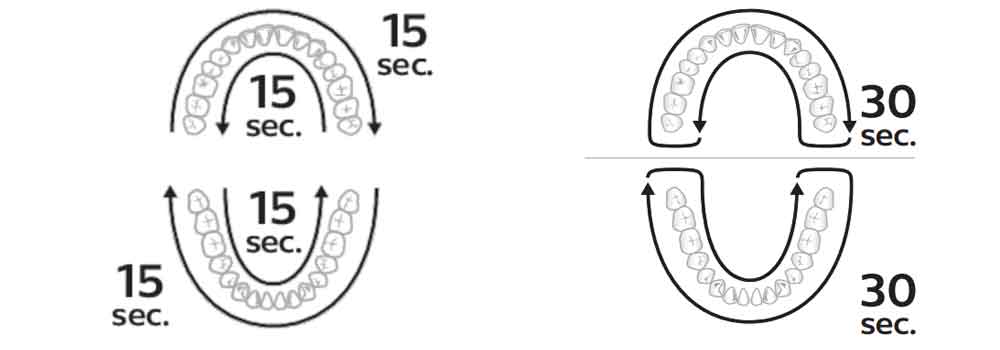
Small touches make big differences
I like how you can push the Power Flosser right up to a wall, because, unlike most corded water flossers, the detachable power cable fits into the underside, rather than protruding from the back. If you lack space, this certainly helps.
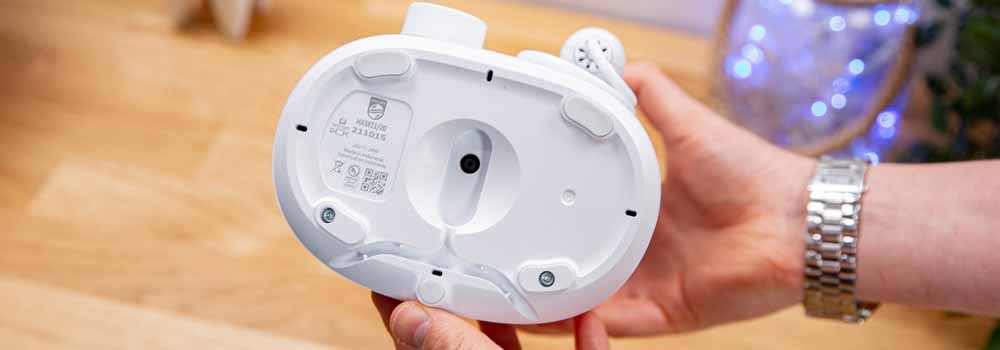
You have got the best part of 8 feet from the power adapter to the nozzle tip, which gives you a little more flexibility too. If you need more than this, you’ll want to take a look at the Cordless Power Flosser 3000.
It’s easy to overlook the function buttons. They give a satisfying click and feedback when pressed and the LED’s make it easy to see what mode is active.
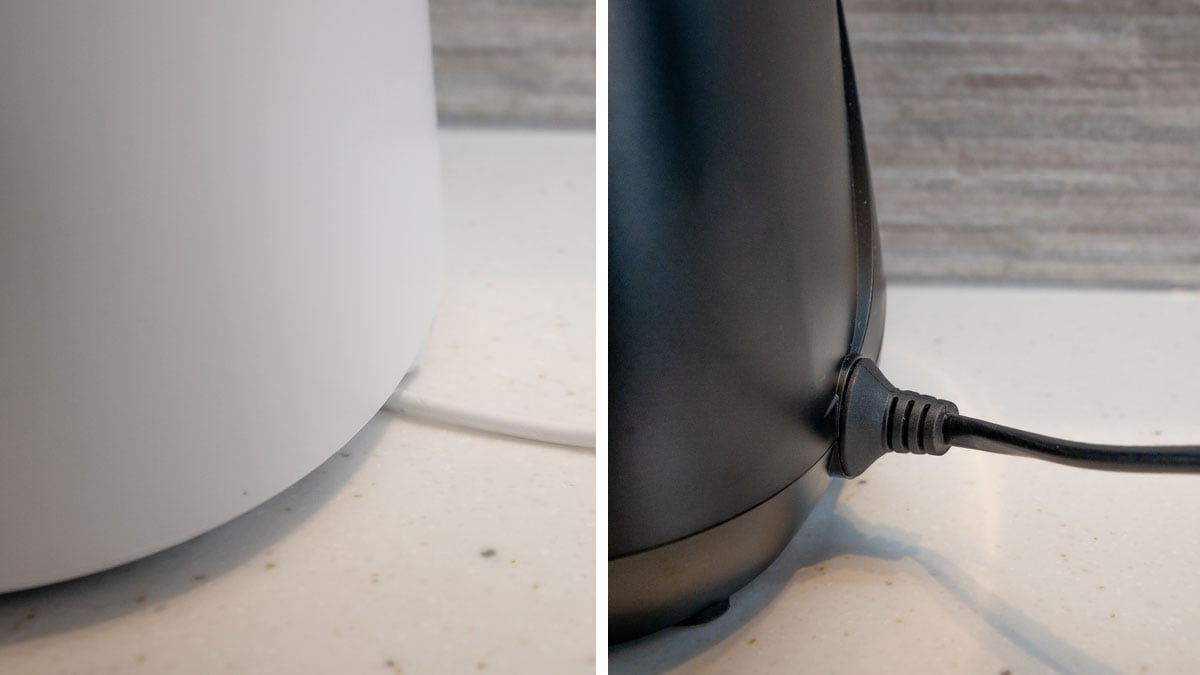
Stylish and well designed
All of the Power Flosser models have quite a clean, modern, and stylish look, which is a good thing. I like them and I see no reason why they won’t suit the homes of the vast majority of users.
I think for the most part the material quality is good. The handle is perhaps where they feel most ‘cheap’. It is in part due to the lightweight and hollow nature of the handle.
Available in white colour only, it’s inoffensive but a bit boring. I quite like a bolder colour, it stands out and feels more appealing. Waterpik is known for offering blues, greens and purples.
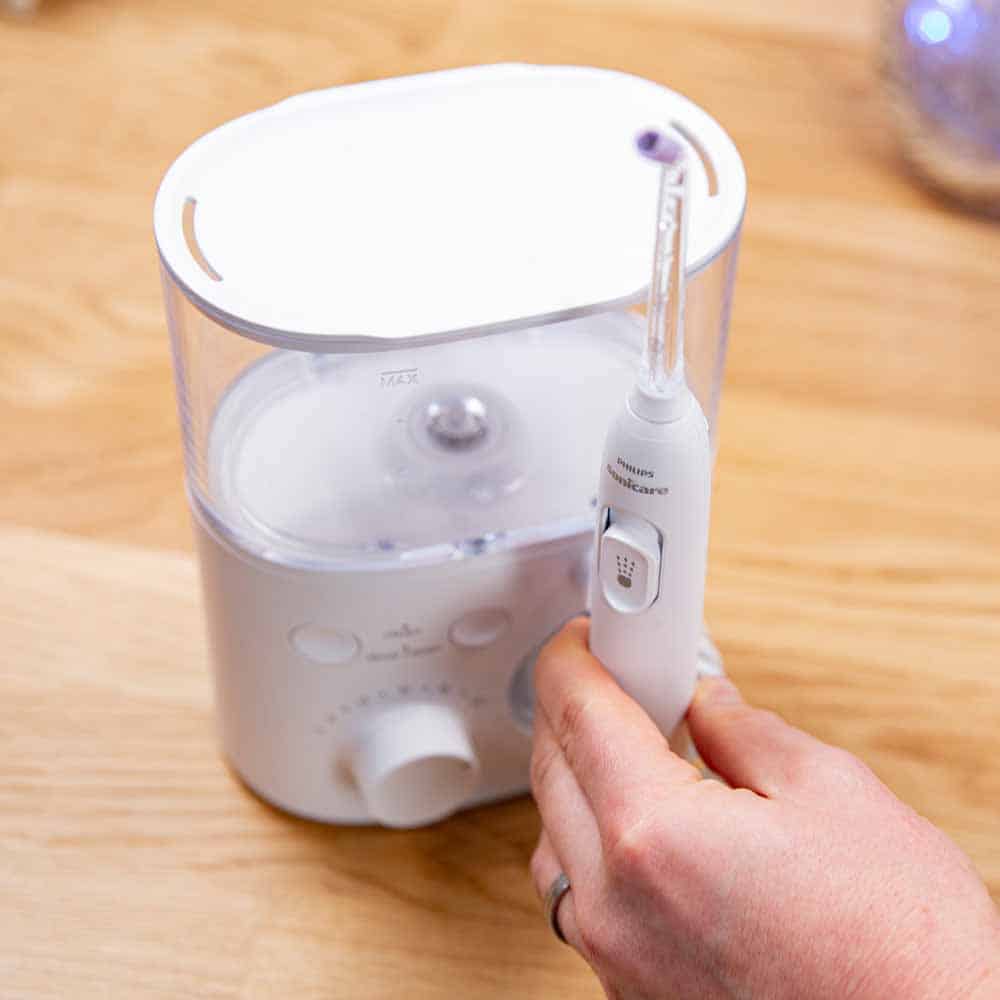
Minor frustrations from my testing
If you’ve not used a water flosser before, you might not even consider these things to be issues. I’m just sharing what I think are slight annoyances when comparing the day-to-day usage of the Power Flosser 3000 to others that I’ve tested.
It’s not possible to rotate the nozzles
Unlike on other flossers such as the Waterpik Aquarius and whitening, you can’t rotate the nozzle on the Power Flosser. This meant I had to rely on twisting my hand or wrist to be able to reach certain spaces in my mouth.
For me, this wasn’t a big deal, but I can see how it may be more challenging for someone with dexterity issues. Being able to rotate the nozzle gives more flexibility and control with less hassle. I’ve found it helps to reduce the amount of mess you make, too.
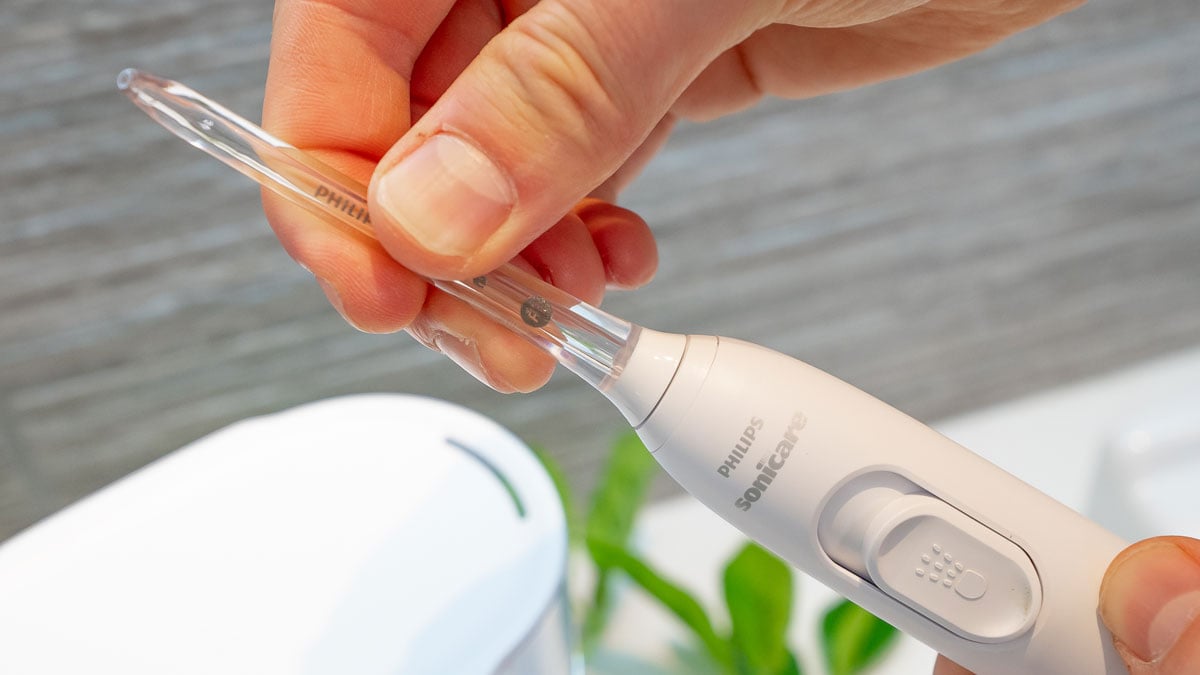
Philips parts are more expensive
At around $9 per replacement nozzle, Philips is commanding a premium of around $3 per replacement tip when compared to Waterpik equivalents. I think this is a bit expensive for a bit of plastic.
Over 3 years this means an extra $25 or so to own the Power Flosser 3000 compared to the Aquarius. It’s not huge, but a price difference need not exist, particularly when the cost of buying the flossers is comparable.
Expect to pay around $100 for the Power Flosser 3000, whilst the Aquarius will cost $110.
Clean the nozzle thoroughly regularly and there’s little reason you can’t use it longer than the advised 3 months. It’s one way to keep costs down.
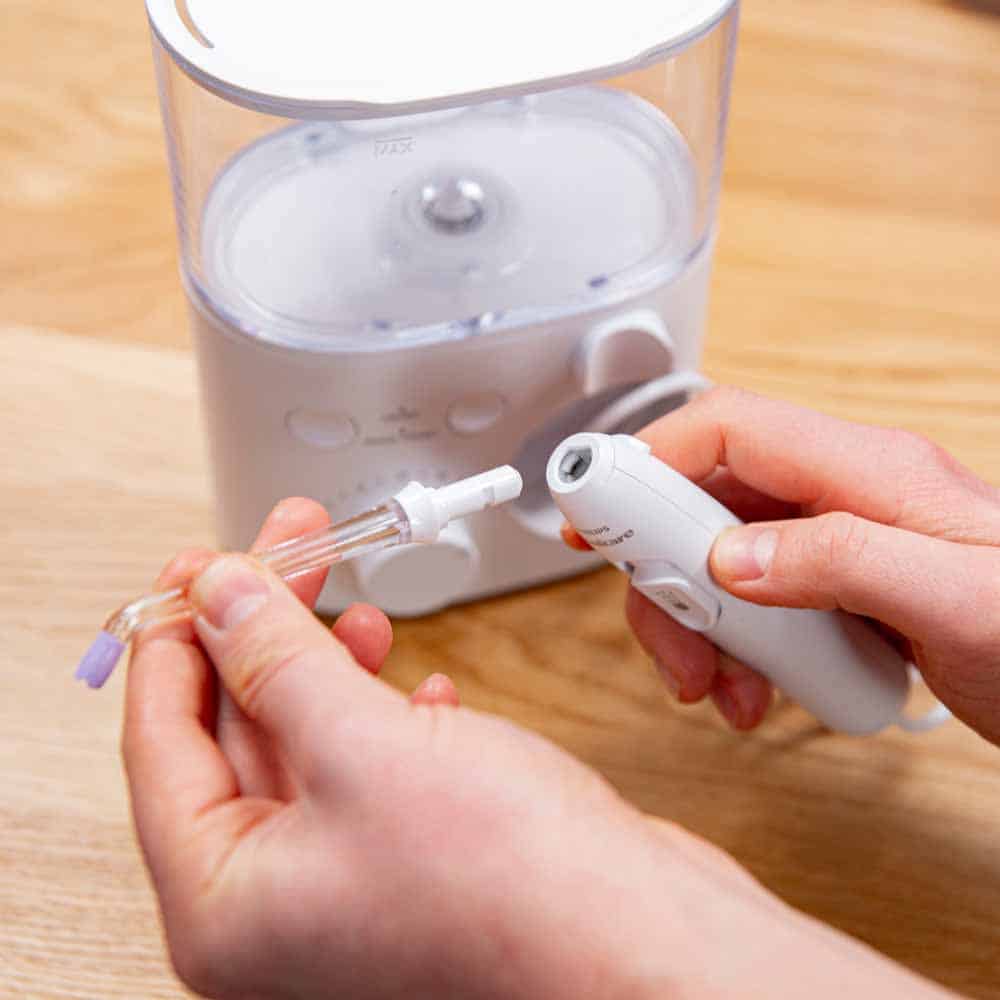
The rubber feet don’t seem to stop it from slipping
I don’t know if it was just the work surface I was using this on, but even when filled, I found the unit would slip slightly on the countertop when I pressed the button. I don’t feel I was being heavy handed to cause this.
It is a minor irritation and if you’ve got it pushed up against the wall, you won’t even notice it. I was just a bit surprised given the rubber feet.
I’m not convinced by the extra cleaning modes
The 7000 offers 4 cleaning modes, whereas the 3000 and 5000 offer 2. There are notable differences in the water flow between all the modes, but you don’t need 4 in my opinion. As far as I’m aware there isn’t any evidence about how much difference they may make, and I couldn’t particularly tell the difference from my testing.
I can’t say I necessarily prefer one mode over the other, they are just different. But, I don’t have any complex oral care needs and my teeth and gums are generally in good health.
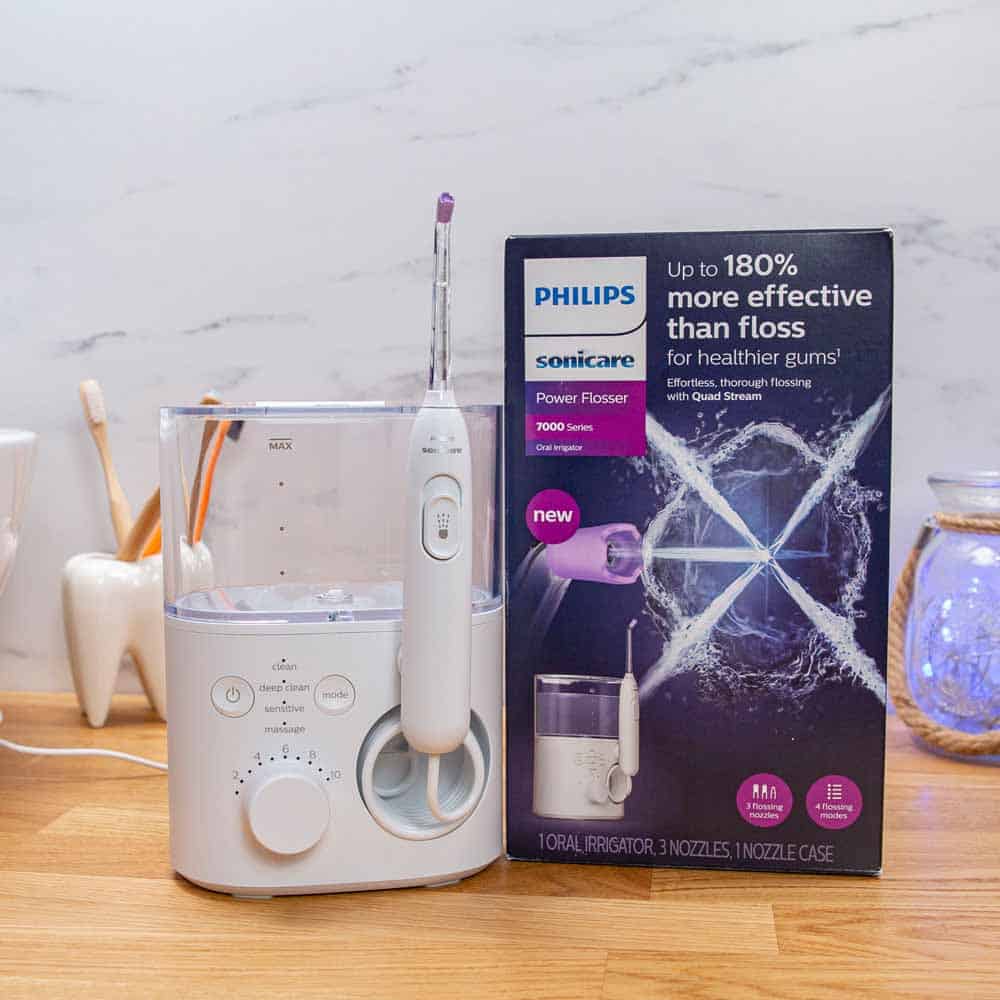
The magnetic handle isn’t quite as good as it sounds
The magnetic handle attachment on the 5000 and 7000 is a bit nicer than the plastic dock of the 3000. Removing the handle is a touch quicker but it can be awkward to return it after use.
The hose doesn’t always coil back into place as it should, preventing the handle from docking correctly. You need to guide the hose in.
It will in theory shut off the water flow when docked, by triggering the switch to move to the off position. I don’t see the point. Unless you’ve drained the tank, water continues to shoot out until docked, covering you and your bathroom. I always slide the switch off, before removing it from the mouth.
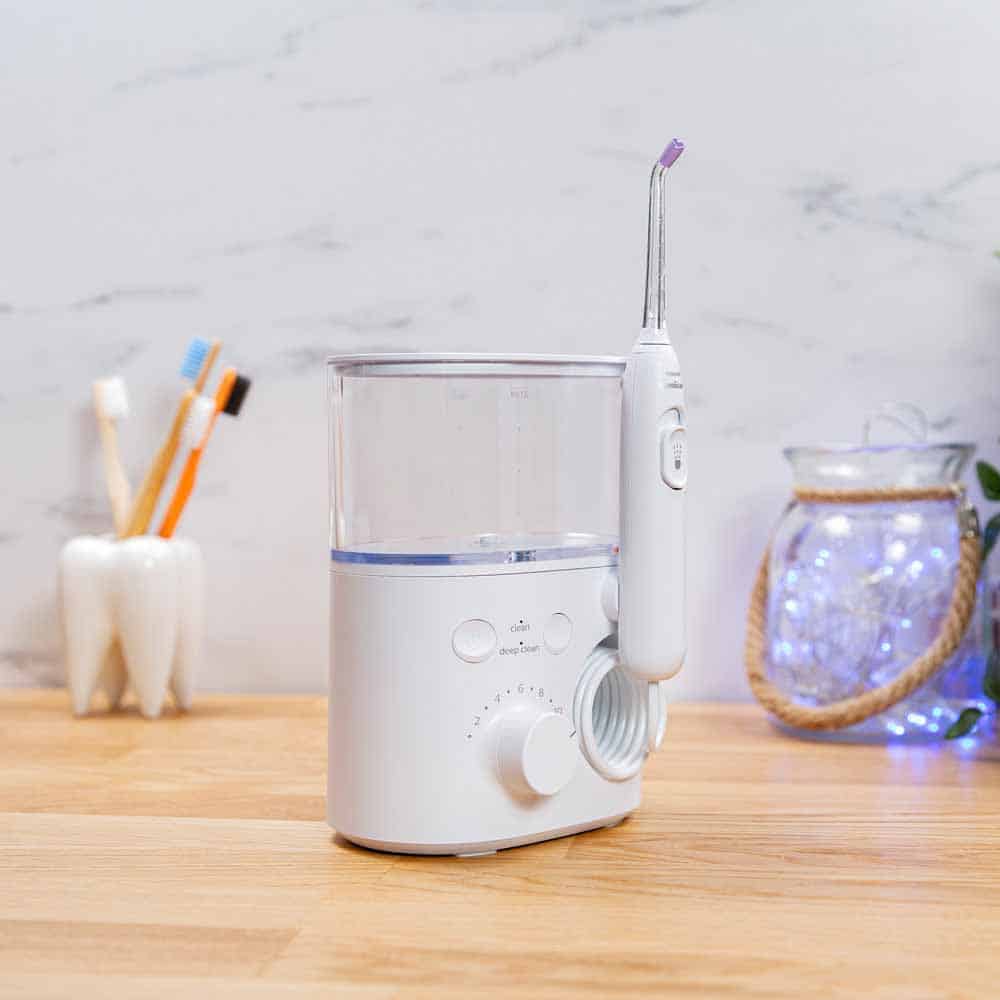
It feels more solid
I have no reason to be concerned about the ongoing reliability of these flossers, even as an entirely new product line. During my testing, all have performed well. The handle, reservoir and other parts feel solid.
Unfortunately, according to the manual, no parts on the flosser are designed to be user serviceable. This isn’t uncommon for a product of this type, but when there is a need to move to more sustainable approaches this is disappointing.
It would, for example, be good to see the option of replacing the hose and handle if ever it was required.
An industry average 2 year warranty is included, should the worst happen. As a leading brand, it would be nice to see the company setting a new standard of 3+ years, but unfortunately not.
Environmental impact
There haven’t yet been any studies to specifically measure the environmental impact of water flossers.
A 2020 study found that an electric toothbrush is around 11 times more impactful on the environment than a manual toothbrush. It’s likely to be similar when a water flosser is compared to string floss or interdental brushes.
If you can use string floss or interdental brushes, it will be better for the planet than opting for the Power Flosser. It is interdental brushes that are the most effective of all flossing tools.
I don’t think there is much that could be done to reduce the impact of the Power Flosser specifically. A USB Type-C power adapter would have been slightly better than the proprietary connector.
Petroleum-based plastics are used, rather than plant-based, thus using more of the planet's finite resources. It would be appreciated if Philips implemented some sort of scheme to recycle used nozzles to reduce their impact.
Conclusion: Power Flosser 3000 is the one to buy
The 3000 is the model from the Power Flosser range with the best blend of features and performance for the price.
It is a good buy with no major inconveniences.
The Waterpik Aquarius is a touch cheaper and has the rotating nozzle the 3000 lacks.
FAQ
- How to activate or deactivate the pacer on the power flosser?
- You can activate or deactivate the pacer feature by holding the on/off button and the mode button simultaneously for 5 seconds.
- When deactivated, all the lights will flash once.
- When activated, all the lights will flash twice.
Size guide
- Water Flosser Height With Nozzle - 29cm / 11.4 inches
- Width - 13.5cm / 5.3 inches
- Depth/thickness - 9~13cm / 3.5~5.1 inches (larger figure includes handle)
- Weight with nozzle (no water) - 695g / 24.5oz
- Package weight - 997g / 35.2oz
Noise
- 74dB
Country of manufacture
- Indonesia
Disclaimer
The Sonicare Power Flosser 73000 spoken about in this review was provided by Philips PR department. Electric Teeth did not purchase this model. No financial reward was provided to conclude the review the way that we did and Philips had no editorial control over the content. The 3000 & 5000 were purchased by Electric Teeth.



